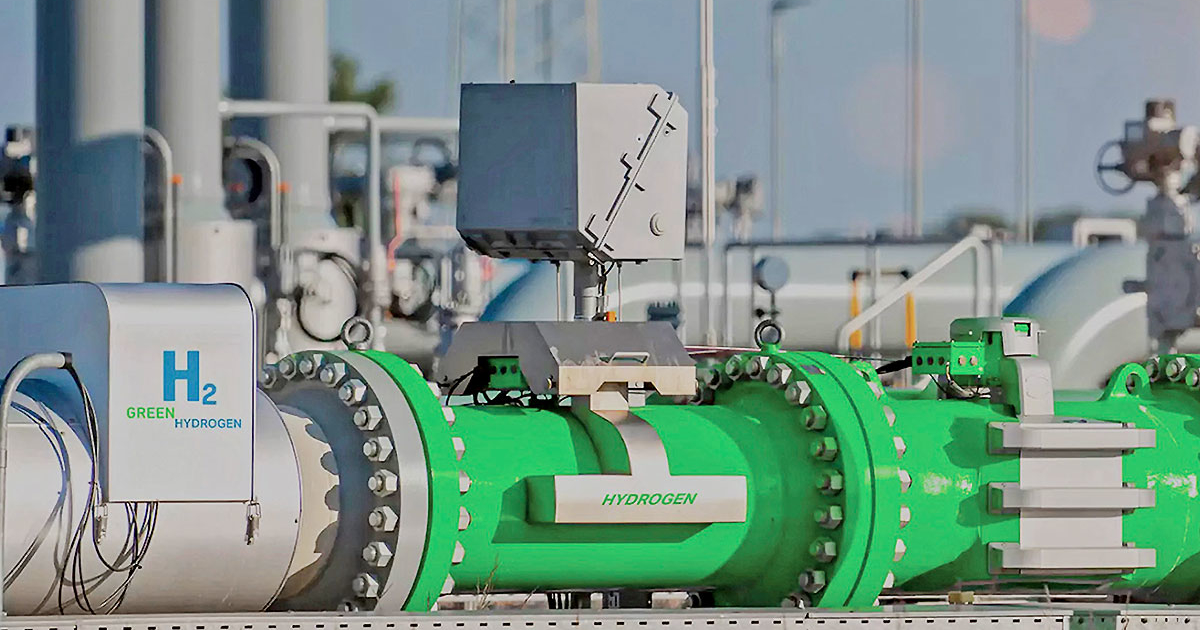
The emergence of U.S. government industrial policy designed to slash greenhouse gas emissions will push the country’s most polluting and carbon-intensive sectors to hydrogen as their fuel choice.
By subsidizing the production of clean hydrogen, the government is encouraging its use by the steel, cement, iron, ammonia, petrochemical and specialty fuel industries. Combined, heavy industry accounts for about 23 percent of annual U.S. greenhouse gas emissions, according to the federal government.
Shipping and logistics companies and heavy-vehicle manufacturers — transportation accounts for about 28 percent of U.S. greenhouse gas emissions — also stand to benefit from producers expanding production and using government subsidies to reduce the cost of clean hydrogen.
Federal financial support will make hydrogen one of the most cost-effective decarbonizing fuels, said Patrick Molloy, manager for the climate-aligned industries program at the Rocky Mountain Institute, a think tank in Colorado focused on the U.S. energy sector and environment.
“I would say that if you were in the steel or the ammonia businesses right now, there is a very, very strong case toward transitioning” to hydrogen, Molloy said. “There are sectors where hydrogen will be one of the only options you will have toward decarbonization.”
Under the Inflation Reduction Act passed by Congress in 2022, companies that produce green hydrogen — which is made by electrolysis with wind, solar power or other sources and is the cleanest form of the fuel — can receive a tax credit of $3 per kilogram. There are smaller subsidies for making what is known as blue hydrogen, mostly made from natural gas, and gray hydrogen, made from either natural gas or methane, which are less clean energy sources.
Shipping and multiple forms of mass transit would benefit. For example, any train, truck, bus or boat needing a very large lithium ion battery or a long time to recharge will have a use case for hydrogen as a fuel, said Jeffrey Osborne, a senior analyst at investment bank TD Cowen who covers the sustainability and mobility technology sector.
“Think trains, trucks, buses and boats. Those are going to be the applications that use hydrogen,” Osborne said.
The oil and gas industry is also hedging its bets in anticipation of hydrogen becoming the dominant decarbonizing fuel in the U.S. BP, Chevron, ExxonMobil and Shell have major plans to produce green and blue hydrogen.
Chevron and ExxonMobil are also among the chief backers of creating a hydrogen production complex that leverages existing pipelines and chemical plants along the Gulf Coast.
It would be one of six to 10 regional hubs for which the U.S. government has set aside $7 billion in subsidies. The idea is for consortia to build the hubs made up of networks of hydrogen producers, customers and infrastructure providers to accelerate the adoption of hydrogen.
According to the Congressional Budget Office, the hydrogen production credits will add up to an estimated $13.2 billion in subsidies over 10 years.
And hydrogen producers will need to raise additional capital to build out infrastructure and meet federal production quotas.
Currently, the U.S. produces 10 million metric tons of hydrogen per year, almost all of which is classified as gray and is used mainly for the petroleum refining and ammonia production industries, according to the Department of Energy.
Green hydrogen makes up less than 1 percent of all hydrogen production grades, according to the Environmental and Energy Study Institute, a think tank in Washington, D.C.
Transforming that 10 million metric tons into green hydrogen by the Energy Department’s 2030 goal will be difficult for U.S. hydrogen producers, according to energy industry consultancy Wood Mackenzie. After that, targets become even steeper — 20 million metric tons annually by 2040 and 50 million metric tons by 2050.
“Several factors make meeting these production targets unlikely,” said Wood Mackenzie analyst Hector Arreola.
“The level of penetration on each end-use in the U.S. is uncertain and will vary widely.”
Green hydrogen production will also be up against decarbonization alternatives, and there may be a lack of public policy support for hydrogen production technology, Arreola said.
Hydrogen may not gain wide customer acceptance in some industries, limiting its demand. Trucking, for example, might not adapt fuel cell vehicles in large numbers, Osborne said. Such trucks might be too expensive to purchase or have high repair costs, he said.
Mike Roeth, executive director of the North American Council for Freight Efficiency, told Automotive News that in the coming years, he doesn’t expect hydrogen to become a ubiquitous fuel like diesel, the current dominant fuel for the trucking industry. The council’s members include fuel, automotive and consumer companies such as Shell, Cummins, Penske and PepsiCo.
The council believes battery-electric trucks will be dominant in the space, and hydrogen-powered trucks will be used for long-haul trucking and heavy hauling in industries such as logging and cement, Roeth said.
“There will be no next diesel, and so anybody who is saying hydrogen will be that or battery-electric will be that or renewable fuels will be that we think is wrong,” Roeth said.
Roeth expects renewable diesel and natural gas along with hydrogen fuel cells, internal combustion engines that use hydrogen, and battery-electric systems all will power commercial trucks in the coming years.
Despite the challenges, Bosch sees hydrogen as a long-term solution to lowering the carbon emissions of many industrial sectors, said Matt Thorington, the company’s engineering manager of fuel cells.
It recently launched production of fuel cells for truck startup Nikola Corp.’s upcoming hydrogen-powered Class 8 semi. The company said it expects hydrogen technology to generate about $5.5 billion in revenue by 2030, anticipating that 1 in 5 new trucks that weigh more than 6 tons will be hydrogen-powered by that time.
“We really see this as a long-term play. Yes, there’s things that need to happen in the infrastructure, but we see all the momentum there,” Thorington said.